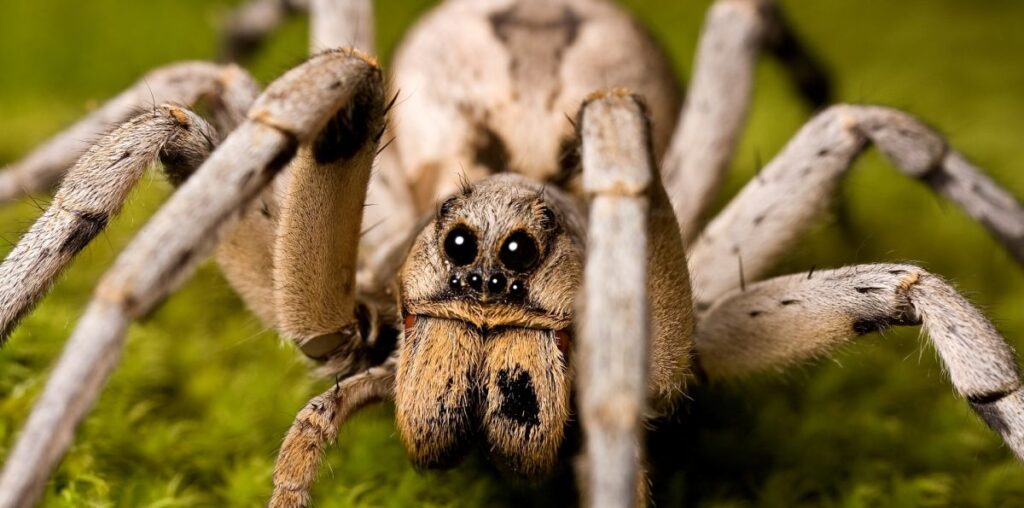Spinning Tales: The Fascinating World of Spiders
Spiders are found all over the world and are diverse in their behaviors, habitats, and levels of danger to humans. Some countries with high spider diversity include Australia, South America, and Africa. While many spiders have a reputation for being dangerous, only a few species pose a significant threat to humans. These include the Black Widow, Brown Recluse, and funnel-web spiders.
Exploring the Diverse World of Spiders: From Dangerous to Docile
Spiders are one of the most fascinating creatures in the animal kingdom, with a wide variety of species found all over the world. From the lush rainforests of South America to the arid deserts of Australia, spiders have adapted to thrive in diverse habitats. This adaptation is also reflected in their behaviors, which range from passive to predatory.
Despite their diverse characteristics, spiders are often feared and misjudged due to a few dangerous species. The Black Widow, Brown Recluse, and funnel-web spiders are notorious for their venom, which can cause serious harm to humans. However, it’s important to note that only a small percentage of spider species are dangerous to humans, and most spiders actually play a crucial role in controlling pests and maintaining a healthy ecosystem.
For those who are interested in learning more about spiders, it’s important to understand the basics of their anatomy, behavior, and habitats. This knowledge can help to dispel common misconceptions and promote a greater appreciation for these amazing creatures.
Discovering the Wonders of Spiders: Separating Fact from Fiction
Spiders have captivated the imagination of people for centuries, inspiring art, literature, and myth. However, despite their widespread presence and influence, spiders are often misunderstood and feared. For those who are interested in learning more about these fascinating creatures, it’s important to understand the basics of their anatomy, behavior, and habitats.
One of the key misconceptions about spiders is their reputation for being dangerous. While it is true that some spider species have venom that can be harmful to humans, the vast majority of spiders are not dangerous and play important roles in controlling pests and maintaining a healthy ecosystem. By understanding the biology of spiders and their behaviors, it’s possible to separate fact from fiction and appreciate their value to the world around us.
Another important aspect of understanding spiders is their anatomy. Spiders have unique and complex bodies, with specialized appendages for movement, hunting, and protection. By studying the anatomy of spiders, we can gain a deeper understanding of their abilities and adaptations to different environments.
Finally, it’s important to understand the habitats of spiders. Spiders can be found all over the world, from the rainforests of South America to the deserts of Australia. Each habitat provides unique challenges and opportunities for spiders, and by studying the habitats of spiders, we can gain a greater appreciation for their diversity and resilience.
A Guide to Breeding Spiders: Easy, Safe, and Dangerous
Spiders are fascinating creatures that have captured the imagination of people for centuries. For those who are interested in breeding spiders, it’s important to understand the different types of spiders available, their behaviors, and the levels of difficulty and safety involved. This guide will provide an overview of the best options for breeding spiders, as well as some examples of dangerous species that should only be raised by experienced keepers.
For those who are new to breeding spiders, it’s recommended to start with easy and safe species. Some of the best options include the Mexican Red Knee, the Chilean Rose, and the Avicularia species. These spiders are relatively easy to care for, have attractive and colorful bodies, and are relatively docile. They are also relatively safe for handlers, making them a great option for those who are just starting out.
However, it’s important to note that even the easiest and safest spiders can pose a risk if they are not handled properly. Spiders have powerful fangs and venom, which can be dangerous if they are not handled with care. It’s recommended that new keepers educate themselves on the best practices for handling spiders and provide proper housing and food to keep them healthy and safe.
For those who are more experienced and looking for a challenge, there are a number of dangerous species that can be raised in captivity. These include the Black Widow, the Brown Recluse, and the funnel-web spiders. These spiders are highly venomous and can pose a significant threat to humans, so it’s recommended that they only be raised by experienced keepers who understand the risks involved.
Breeding spiders can be a rewarding and fascinating hobby, but it’s important to understand the different types of spiders available, their behaviors, and the levels of difficulty and safety involved. For those who are new to breeding spiders, it’s recommended to start with easy and safe species, such as the Mexican Red Knee, Chilean Rose, or Avicularia species. For experienced keepers, there are also a number of dangerous species that can be raised in captivity, but it’s important to understand the risks involved and handle these spiders with care.
When it comes to the dangers of spiders, it is important to remember that most are harmless to humans and play important roles in our ecosystem. However, if you are concerned about a potentially dangerous spider in your area, it is best to seek advice from a professional.
#SpiderDiversity #SpidersAroundTheWorld #SpiderBehavior #SpiderAnatomy #DangerousSpiders #BlackWidow #BrownRecluse #FunnelWebSpiders #SpiderEcology #SpiderFacts #SpiderEducation #ArachnidAppreciation #SpiderHabitats #RainforestSpiders #DesertSpiders #SpiderMisconceptions #SpiderMythBusting #SafeSpiders #SpiderPestControl #SpiderEcosystem #SpiderLovers #SpiderConservation #SpiderStudy #SpiderScience #SpiderResearch #SpiderPhotography #SpiderCulture #SpiderArt #SpiderLiterature #SpiderHistory #SpiderCuriosity #SpiderExploration #SpiderEnthusiast #SpiderLovers #ArachnidAnatomy #DangerousSpiders #PetSpiders #BreedingSpiders #SpiderEcology #SpiderDiversity #SpiderFacts #SpiderHabitats #SpiderBehavior #SafeSpiders #BlackWidow #BrownRecluse #FunnelWebSpiders #ChileanRoseSpider #ZebraSpider #HuntsmanSpider #JumpingSpider #Pisauridae #SpiderEducation #MetaverseChaseReality #SpiderEducation #SpiderAnatomy #SpiderBehavior #SpiderHabitats #SpiderMisconceptions #SpiderAppreciation #SpiderBiology #SpiderEcology #SpiderFacts #SpiderMythBusting #DangerousSpiders #SafeSpiders #SpiderPestControl #SpiderEcosystem #SpiderStudy #SpiderScience #SpiderResearch #SpiderPhotography #SpiderCulture #SpiderArt #SpiderLiterature #SpiderHistory #SpiderCuriosity #SpiderExploration #SpiderEnthusiast #SpiderDiversity #SpidersAroundTheWorld #RainforestSpiders #DesertSpiders #SpiderConservation #ArachnidAppreciation #SpiderLovers #SpiderDiscoveries #SpiderAdventures #SpiderBreeding #SpiderCulture #SpiderEnthusiast #SpiderScience #SpiderResearch #SpiderLovers #SpiderDiscoveries #SpiderAdventures #EasySpiders #SafeSpiders #DangerousSpiders #MexicanRedKnee #ChileanRose #Avicularia #BlackWidow #BrownRecluse #FunnelWebSpiders #SpiderAnatomy #SpiderBehavior #SpiderHabitats #SpiderMisconceptions #SpiderAppreciation #SpiderBiology #SpiderEcology #SpiderFacts #SpiderMythBusting #SpiderCare #SpiderHandling #SpiderHousing #SpiderFood #SpiderHealth #SpiderSafety #SpiderEducation #SpiderConservation #ArachnidAppreciation

